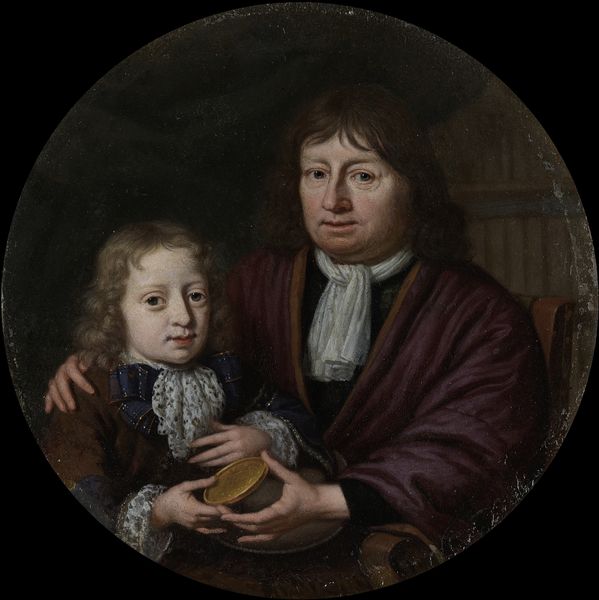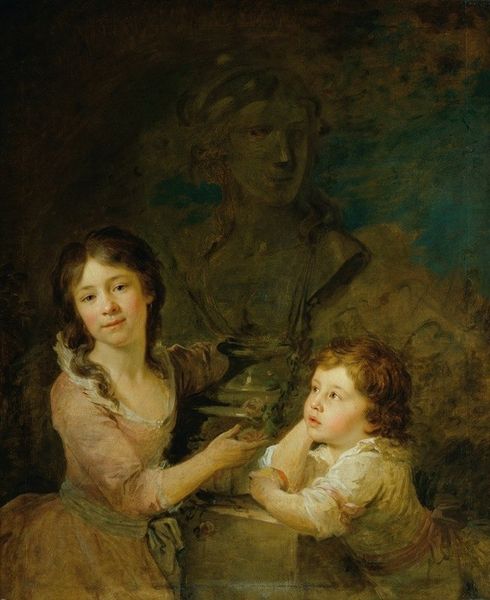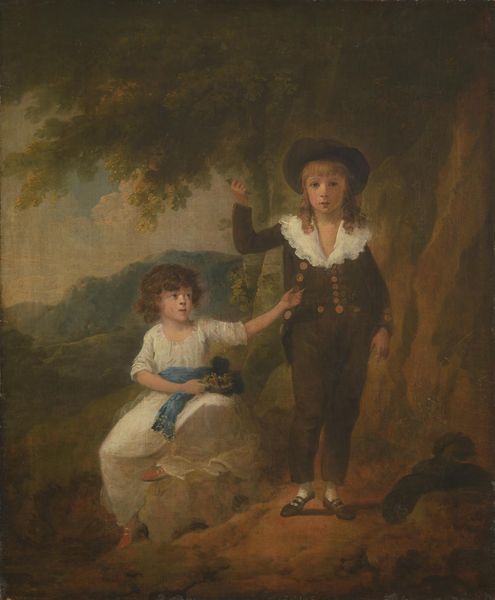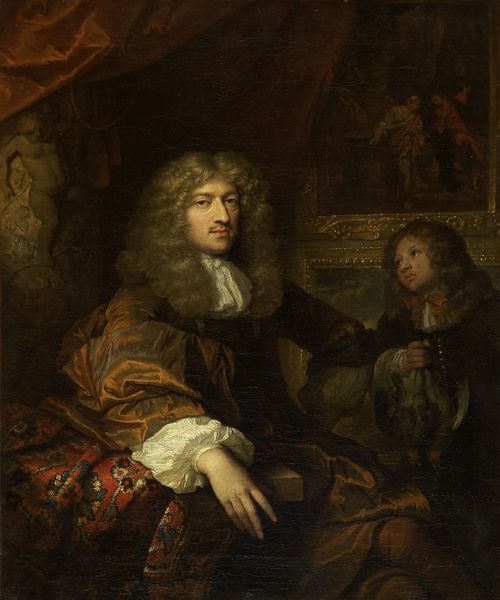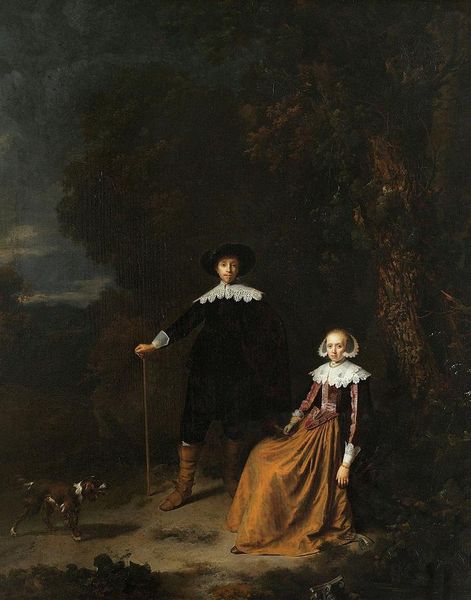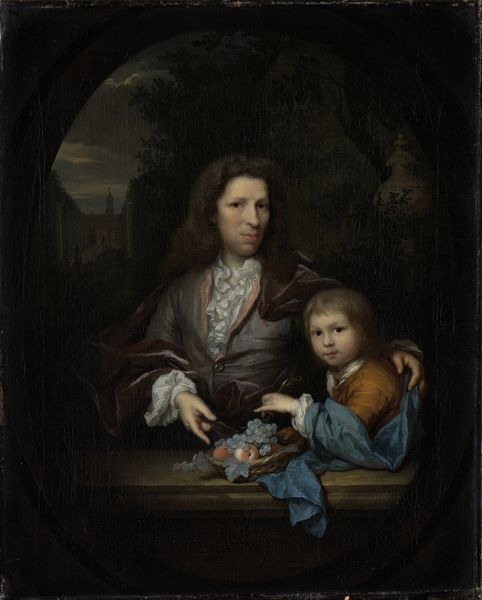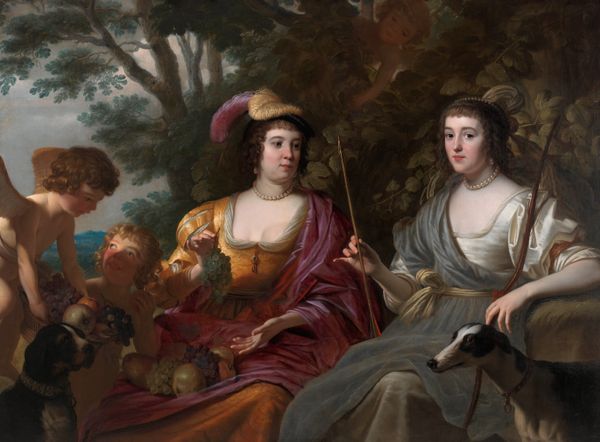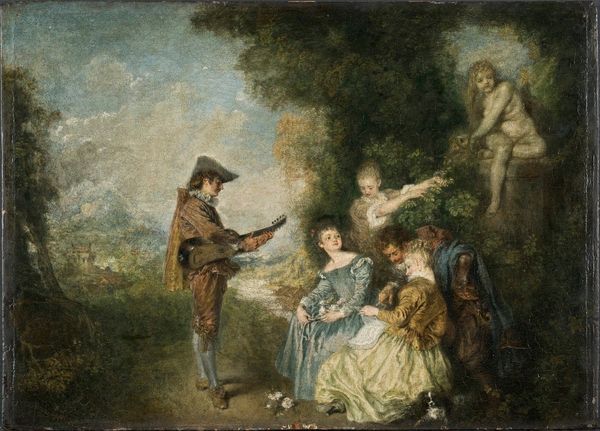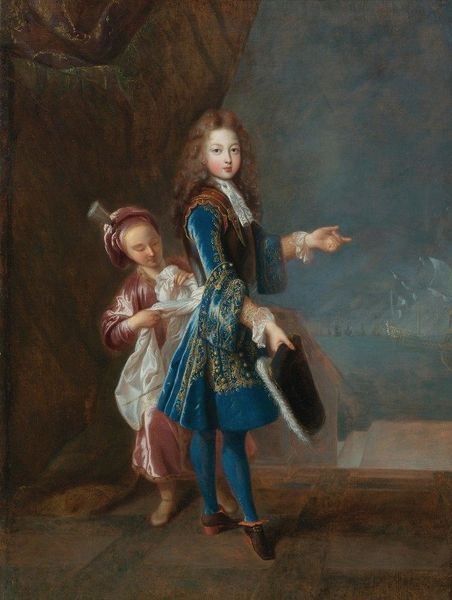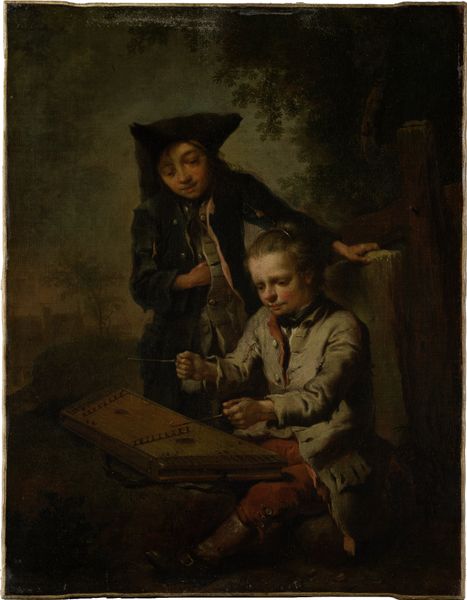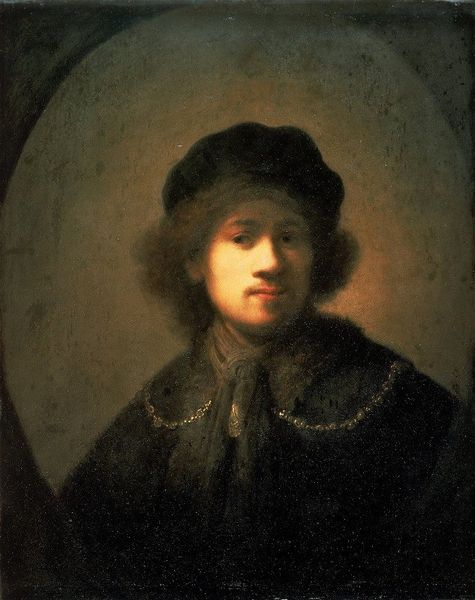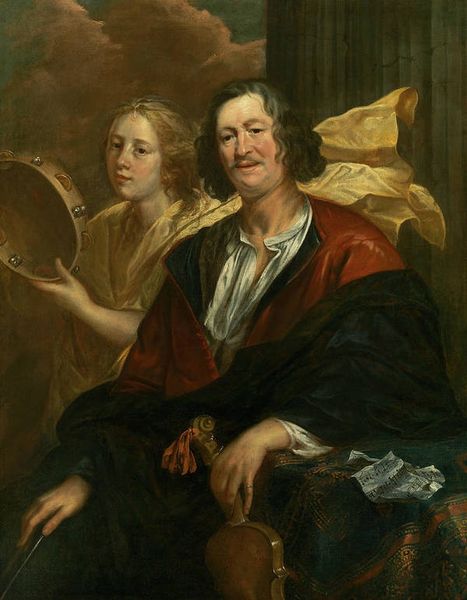
painting, oil-paint
#
portrait
#
narrative-art
#
baroque
#
painting
#
oil-paint
#
figuration
#
genre-painting
Dimensions: 90.5 cm (height) x 70 cm (width) (Netto)
Editor: "The Shepherdess's Song" by Jürgen Ovens, likely painted sometime between 1638 and 1678. It’s an oil painting, currently hanging in the SMK in Copenhagen. I’m immediately drawn to the dynamic created between the figures, especially the girl with the flute looking so intently at the singer. What compositional elements stand out to you? Curator: Let's focus on the interplay of forms. Observe how Ovens orchestrates the use of light and shadow. The faces, sheet music, and the first girl’s gesturing hand, act as central points, but they lack stark contrast. The artist creates movement through a winding, asymmetrical distribution of these tonal areas. What do you observe regarding the figures' costumes and their materiality? Editor: They are not presented in traditional clothes of someone of the earth. They both wear elegant dark blue robes that draw attention to their features. Does the darkness act as a contrast to something beyond the musical theme? Curator: Precisely. The artist has deployed a formal technique rooted in counterpoint—contrasting a grounded form with the implied depth. Notice how Ovens meticulously renders the textural variation of the robes against the organic backdrop of what appears to be a meadow, or something to that effect, and how this affects our reading of the scene. Does this choice enhance or detract from the composition? Editor: I think it’s effective. It heightens the feeling of idealized romance or theater instead of just observation. The juxtaposition really reinforces the theme in a more complex way than the simple clothes might allow. I never really understood the formalism perspective until now. Thanks! Curator: A refined eye appreciates the material transformation but it takes time and dedication to build it!
Comments
No comments
Be the first to comment and join the conversation on the ultimate creative platform.
